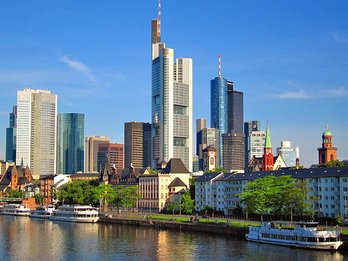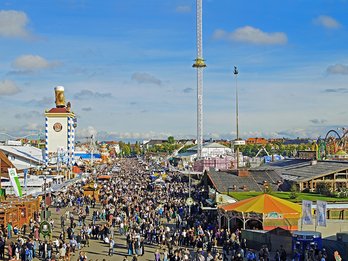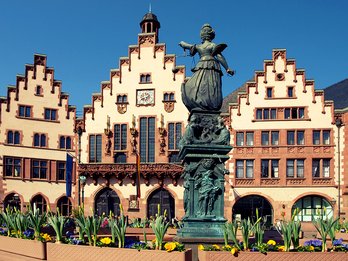Travel guide for Germany
Germany is home to more than 80 million people, more than 3 million of which live in the capital Berlin. As one of the most populous countries in Europe, Germany offers a diverse and varied culture. For example, Germany offers an incredibly diverse architecture. Many buildings are still preserved from Roman times, such as the Roman Theater in Mainz or the Porta Nigra in Trier. From the Romanesque is, for example, the Mainz Cathedral. Buildings in the Gothic style can be found in many larger cities, the most famous being the Cologne Cathedral. In the Renaissance style are the buildings in Dresden, Berlin and Torgau.
Almost no other country in the world has as many city festivals as Germany. Whether it is the local strawberry festival, the Museumsuferfest in Frankfurt or the Oktoberfest in Munich, there is something to celebrate at any time of the year. Immerse yourself in the colorful hustle and bustle and join the party! In addition to the capital, the largest German cities are Hamburg, Munich, Cologne, Frankfurt am Main, Stuttgart and Düsseldorf.
Geography
Time zone
Climate and travel seasons
| Jan | Feb | Mar | Apr | May | Jun | Jul | Aug | Sep | Oct | Nov | Dec | |
|---|---|---|---|---|---|---|---|---|---|---|---|---|
|
|
2° | 4° | 8° | 13° | 19° | 22° | 23° | 23° | 20° | 13° | 7° | 3° |
|
|
-4° | -3° | 0° | 3° | 8° | 11° | 12° | 12° | 9° | 5° | 2° | -1° |
|
|
2h | 2h | 4h | 5h | 7h | 7h | 7h | 7h | 5h | 4h | 2h | 1h |
|
|
10 | 9 | 9 | 9 | 9 | 9 | 9 | 9 | 8 | 9 | 10 | 11 |
| Jan | Feb | Mdr | Apr | May | Jun | Jul | Aug | Sep | Oct | Nov | Dec | |
|---|---|---|---|---|---|---|---|---|---|---|---|---|
|
|
4 | 4 | 8 | 14 | 17 | 21 | 23 | 24 | 17 | 14 | 10 | 6 |
|
|
-6 | -8 | -2 | 4 | 8 | 11 | 13 | 13 | 10 | 3 | 1 | -6 |
|
|
4 | 1 | 1 | 7 | 5 | 3 | 4 | 7 | 6 | 3 | 5 | 2 |
|
|
12 | 4 | 9 | 8 | 23 | 28 | 23 | 20 | 10 | 12 | 10 | 17 |
Entry requirements
Currency
The 10-, 20- and 50-cent coins show the Brandenburg Gate as a symbol of division on the one hand and unity on the other.
The 1 and 2 euro coins, in turn, show the German federal eagle as a symbol of German sovereignty.
Health care
Rabies can occur throughout the country. Carriers are mainly dogs, cats and forest animals. In case of bite wounds, medical help should be sought as soon as possible.
Packing list
Religion
Politics
Local language and communication
Public transport
History
Culture
Festivals
Musikmesse Festival: (April) The Frankfurt Music Fair is of great importance to the international music industry. In addition to the fair itself, there is also an associated festival, which is spread across the city and offers a variety of different concerts.
Osthafenfestival: (July) Every year in July, a large art, culture and music festival takes place in Frankfurt's Osthafen. There are 5 live stages with a lot of different artists. What makes this festival great is the fact that it's completely free!
Sommerwerft: (July - August) The Sommerwerft is a free international theater festival with a variety of different artists and performances. Mainfest (August) Frankfurt’s Mainfest is one of the oldest festivals in Germany. During this festival the river Main is celebrated, the city’s lifeline and symbol. In August the river’s shore are rich with food stalls and lives music. The highlight of the event is the big firework display closing the festival.
Museumsuferfest: (August) Every last weekend in August, Frankfurt hosts one of the largest art and culture festivals in Europe, the Museumsuferfest. Many museums on the banks of the Main are open until late at night, and there are also a variety of stages with lots of live music.
Munich:
Braukunst Live: (February) Beer connoisseurs, brewers and beer lovers should not miss the beer fair in Munich! The huge variety of German and international beers is absolutely incredible. The beer fair offers to newcomers a platform where brewers can present their novelties and specialties.
Summer Festival in the Park: (August) There's something for everyone at the Summer Festival in the Olympic Park: rides, booths, gourmet food lanes, beach bar and wakeboarding, as well as free concerts. The highlight is the Ferris wheel, from which you can enjoy a fantastic view of the park and North Munich.
Oktoberfest: (September - October) The largest folk festival in the world has been held on the Theresienwiese since 1810. Every year over 6 million people, mostly from abroad, come to Munich to drink beer. Most visitors wear the traditional clothing called Dirndl or Lederhosen. Traditional brass music is played in the tents, making the whole experience as German as it comes! Christkindlmarkt: (November – December) For all hardcore Christmas fans, the Christkindlmarkt on the Marienplatz might be even better than Santa’s Village. There you will find different booths selling Glühwein or Currywurst and Christmas music at live concerts. FC-Bayern-München: (everyday) The football stadium of the legendary Bayern München team, known as the Allianz Arena, is one of the most impressive stadiums in the whole world. With more than 70,000 seats, shops, and restaurants, watching a football game is an incredible experience.
Holidays
- New Year's Day is celebrated on January 1, like everywhere else in the world
- The Friday before Easter Sunday is Good Friday, it marks the crucifixion of Jesus Christ
- The following Sunday and Monday mark Easter Sunday and Easter Monday, it celebrates the resurrection of Jesus Christ
- On May 1, Germans celebrate Labor Day
- The 39th day after Easter Sunday celebrates Ascension Day, the return of Jesus Christ as the Son of God to His Father in heaven
- The 49th day after Easter Sunday is Pentecost Sunday and the following day is Pentecost Monday. It celebrates the sending of the Holy Spirit
- The 60th day after Easter Sunday marks Corpus Christi. On this day, the bodily presence of Jesus Christ is celebrated in the sacrament of the Lord's Supper.
- German Unity Day is celebrated on October 3
- Christmas, the birth of Jesus Christ, is celebrated on December 24, 25 and 26.
Food
Germany is known for its wide variety of breads. From dark mixed or wholemeal bread to pretzel pastries and white bread, there is something for every taste. Potato dishes continue to be particularly popular with Germans, and potatoes are used as a side dish in many meals.
Among sausages and meat products, pork, beef and poultry are particularly popular in Germany. The bratwurst especially is available in many variations. Fish is also very popular and especially widespread in northern Germany. Among the beverages, beer is drunk throughout Germany. The types of beer also vary region by region. The most widespread is the Pilz. In southern Germany, there are mainly Helles and Weissbier. Altbier is particularly popular in the Lower Rhine region.







